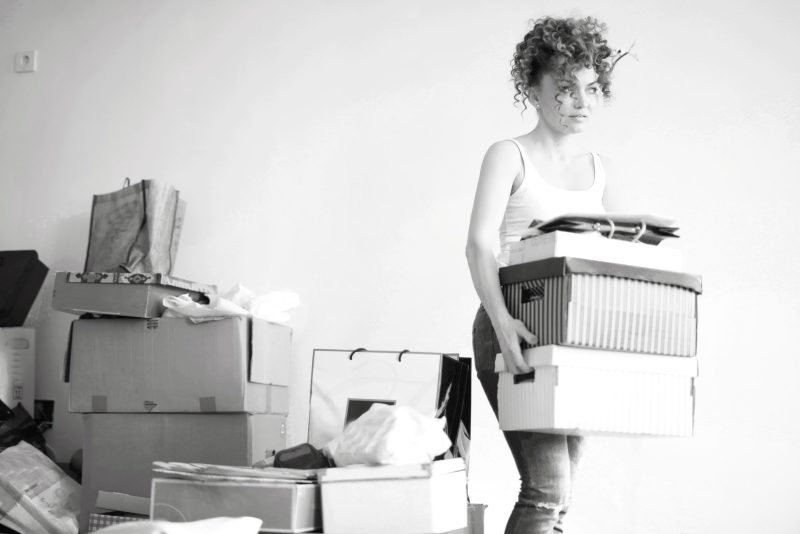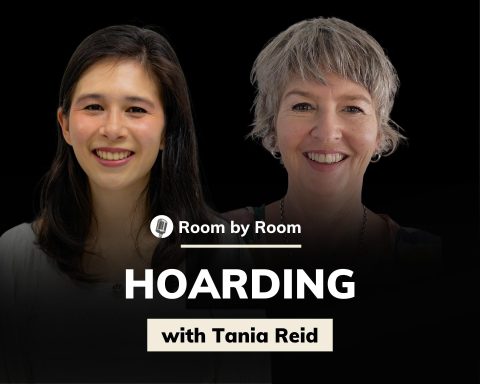One thing that comes to mind when you hear the word hoarding is the behavior of storing large amounts of stuff in the home. Some individuals may think that hoarding is the same as collectors. In fact, hoarding and collecting are two very different things because a collector keeps things at home with a purpose and organizes them according to certain rules.
Meanwhile, hoarding is the practice of storing large quantities of goods at home, even when these items are no longer functional. In contrast to collectors, people who hoard store items randomly will find it very difficult to determine which items should be discarded. Under certain conditions, hoarding can be categorized as one of the psychological disorders that affect individuals.
Hoarding behavior can be a serious problem, especially in home organizations. Generally, individuals with hoarding live in a home that is very messy with piles of stuff. The longer the pile of stuff is, the more difficult it will be for individuals to use a room or even just move around in their own house.
Hoarding can be a lifelong problem if not handled properly and can cause various health and home security problems. Therefore, proper practice and assistance are expected. Through this article, you can understand the importance of honing organizational skills to keep your house tidy even though you and your family may have hoarding behavior.
What causes hoarding disorders?
Individuals with hoarding disorders will have difficulty deciding which items to dispose of and store. Hoarding sufferers also experience difficulties determining when an item must be disposed of so that it does not accumulate in the house.
This is related to problems with brain function which play a role in the process of decision-making, attachment, impulse control, and emotional regulation.
A study explains that individuals with hoarding experience abnormal brain activity in the anterior cingulate cortex and insula. Both brain regions will be overly active when the hoarding sufferer is faced with choosing when and which items should be discarded or stored.
As a result, hoarding sufferers will try to avoid this situation so that things at home will pile up even more because they keep avoiding making decisions.
Common symptoms of hoarding disorders
In the Diagnostic and Statistical Manual of Mental Disorders V (DSM-V) since May 2013, hoarding disorder has been categorized as a mental health problem. The most common sign that appears in people with hoarding is the difficulty that occurs repeatedly when faced with choosing which items to dispose of.
More specifically, individuals who experience hoarding will show the following behaviors:
- Persistent difficulty disposing of belongings, regardless of whether they still have value.
- Difficulty deciding to part with belongings occurs because there is a great desire to own all of these items, which will cause distress if they have to throw them away.
- Struggling to determine which items to throw away will cause an accumulation of things in the home area so that, over time, it will produce piles of items that fill the living area.
How to help someone with a hoarding disorder
Families and neighbors can become agents who help hoarding sufferers keep their homes organized and tidy. However, one of the challenges often faced by families and neighbors is that hoarding sufferers often refuse their help because they feel ashamed of the condition of their own house. Also, it is not uncommon for individuals with hoarding to think that their behavior is not a serious problem.
In fact, the refusal shown by individuals to hoard is a sign that they actually need help from others. Help from external parties can lead hoarding sufferers to accept their condition slowly but surely. Below are six ways you can make.
Don’t hesitate to ask
Start by asking questions before removing or moving an item. Do not throw away or move items without the permission of the owner. This can help to build trust in the hoarding sufferer.
Give some respect
The decision of the person with hoarding behavior should be respected. This can help them to determine what is best for themselves independently. Basically, they are the ones who understand their own needs.
Be sympathetic
Try to listen and understand first before judging that everyone has an emotional attachment to every item they have. Avoid giving suggestions or criticism if they don’t ask you. It will only make them feel embarrassed and have difficulty trusting you as a partner.
Be encouraging
To be a friend to hoarding sufferers, work together to help them organize the house to be tidier and more orderly. Also, appreciate every small effort they make to overcome their difficult conditions.
Be a team member
Try to understand the reasons why people with hoarding choose to keep these items. Also, understand why these objects are considered valuable. After that, work together to find a solution so that items that are no longer needed can be disposed of, and those that are still useful can be stored in a more orderly manner.
Motivate them to reflect
The essence of helping hoarding sufferers deal with their condition is trying to get them to understand and accept it. Invite them to reflect on the bad things that can happen if hoarding behavior is left without proper handling. Also, help them understand the negative impact that occurs when the house is messy and lots of things are piled up.
Avoid forcing them to do what you think is right. However, make hoarding sufferers as the main actors in making decisions regarding the condition of their homes. Being a good and reflective listener doesn’t always have to be a guardian, but to understand and provide support in a positive direction.
Self-practices to overcome hoarding disorder
When you have a hoarding disorder, it’s easy to feel overwhelmed when decluttering your home. However, aside from the help of other people, there are self-practices you can do that will be helpful, especially when living alone.
Virtual coaching with professionals
Virtual coaching held by professionals who are experts in dealing with chronic disorganization can be an alternative for hoarding sufferers seeking help. Also, virtual coaching is generally done through video calls, such as Zoom or Skype, in a seminar or one-on-one session.
Set realistic goals
Some people may think that doing a large-scale house cleaning at one time is an effective way to free a hoarding sufferer’s home from a messy condition. In fact, this will actually make hoarding sufferers feel very depressed because it will only complicate the decision-making process regarding where to start and which items should be disposed of.
Create goals that are realistic and easy to achieve every step of the way. For example, specifying that the living room will be cleaned on Monday, then the following day it will clean the family room, and so on.
Donate items
Items that are still in usable condition but are no longer needed can actually be donated to the nearest social institution. Besides being able to help those in need, donating stuff can also generate additional income.
Take a picture
Start by taking pictures of an area of the house before carrying out the cleaning process. After the cleaning activity is complete, take a picture of the area and compare it to the situation before cleaning. The difference that appears between before and after cleaning can provide positive reinforcement to individuals.
Can a hoarding disorder be cured?
Until now, no research absolutely states that hoarding disorder can be cured. However, there is one treatment method that is considered the most effective in providing treatment for hoarding sufferers, namely Cognitive Behavioral Therapy.
This therapy is carried out by combining elements of organizational skills training and restructuring behavior for hoarding. A number of previous studies have also proven the positive effect of this therapy on individuals with hoarding problems.
In conclusion
Hoarding can be a serious problem for the organization of the house and the occupants. Piles of items buried in the house can increase the risk of falls and physical health problems. And handling hoarding must be done with patience since it’s not easy, and giving time is necessary.
Help from family and friends will be needed because hoarding sufferers need a helping hand from the people around them. However, even small steps can be taken independently to minimize the risk of hoarding if you experience it, such as coaching with professionals, setting realistic targets for cleaning the house, donating unused items, and taking photos of the condition of the room before and after you clean it.
If you would like to see more resources on hoarding, visit the Home Organization Science Labs. The lab uses the research of the Institute for Life Management Science to produce courses, certifications, podcasts, videos, and other tools. Check out the Home Organization Science Labs today.
Photo by Andrea Piacquadio on Pexels



